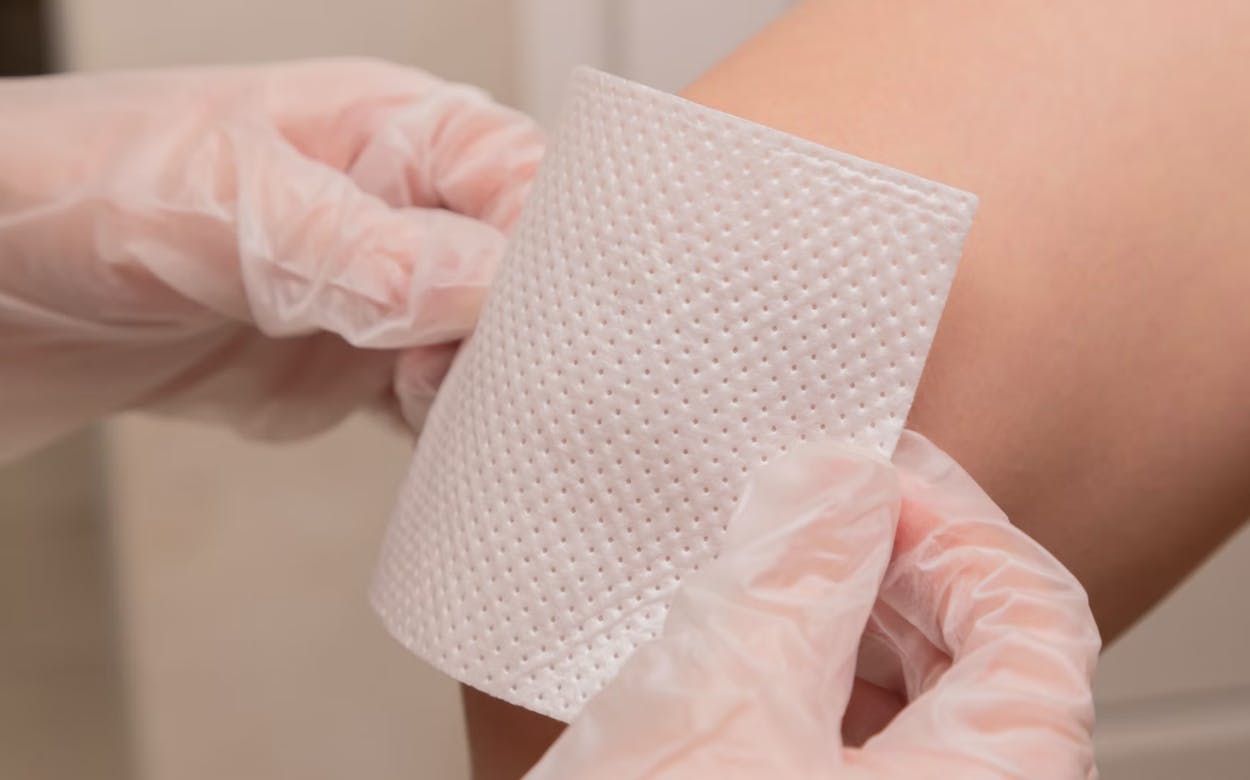Band aids seem to be a quick and easy fix. But they could do much more. Smart bandages found to accelerate wound healing in preclinical tests

In the near future, walking away from a medical procedure with a standard gauze wound dressing and directions to call your doctor “if anything happens” may be a thing of the past.
That is, if the industry’s most ambitious smart bandage developers have anything to say about it.
Stanford researchers recently developed a proof-of-concept smart bandage model that works in mice. Their paper, published in Nature Biotechnology, reported that the bioelectric system fitted in the bandage accelerated wound healing in rodent subjects by 25% compared to standard sterile dressings.

If you’ve been a MedTech Pulse subscriber for a while, you may remember our feature on the latest in wound care technology from earlier this year.
There’s a big reason we’re excited about this area of innovation. The healing and monitoring of wounds is an important issue across many specialties in the medical field—from surgery to podiatry. But interestingly, it also focuses particularly on preventing and addressing worst-case scenarios.
In an ideal world, patients with wounds can dress them, wait the requisite amount of time for the immune system and clotting factors to work, and be healed with, at most, a scar to tell the tale.
But things don’t always go that way. As patients leave the hospital or clinic, life happens. Stitches rip and bandages fall off. Abrasions and incisions get infected. People die from improperly treated wounds.
This is why smart bandages seem to us like an exciting, simple, and life-saving product. They take the pressure off physicians to dress the wound adequately and monitor effective healing, all while minimizing patients’ risk of further tissue damage and infection—bringing peace of mind as a result.
However, to realize these impacts, a smart bandage needs to do a whole lot more than simply monitor or improve healing.
What makes this smart bandage different?
Many previous smart bandages focused on gathering information about a wound. Others promoted more effective and efficient healing. This new wireless smart bandage asks: Why not do both?
“We were able to combine both sensors and stimulators in one integrated patch,” study co-author Yuanwen Jiang said of his team’s dual approach. The goal was to allow for better wound healing that could be monitored by a provider, enabling real-time adjustments to be made in response to the data.
In the case of a potential gangrene infection, the smart bandage could respond by:
- Alerting the provider instantly so they can respond in a timely manner—perhaps even before the patient is concerned.
- Releasing antibiotics or other relevant therapeutics to treat the infection quickly.
- Detecting and harnessing the response power of certain immune cells to fight the infection with the body’s own tools.
Plus, the smart bandage relies on a mini flexible circuit board and energy-harvesting antenna for its operating and analytical power. The result is a sleeker smart bandage that doesn’t rely on clunky, function-limiting batteries, and that allows the user to wear it on the go. There is no need to be tethered to a computer for it to work.
Next steps for smart bandages
Now, to prepare for clinical testing, the research team aims to develop a human-ready approach and lower production costs.
Jiang said that in their larger clinical bandages, his team hopes to broaden the smart bandage’s data-gathering capacity—with features like pH and chemical sensors being more sensitive to detect inflammation. The future design might also rely on AI for data sorting purposes, making the device easier to use from a diagnostic standpoint.
Of course, this particular smart bandage may still have a long way to go before patients receive it at the hospital—or before parents place it atop their child’s scraped knee. However, we are excited about the direction this emerging MedTech subfield is going with this hyper-practical innovation.
Prioritizing patient mobility and easy-to-decipher monitoring is key to the adoption of innovation. And in the case of wound healing, it’s likely to eventually save lives.